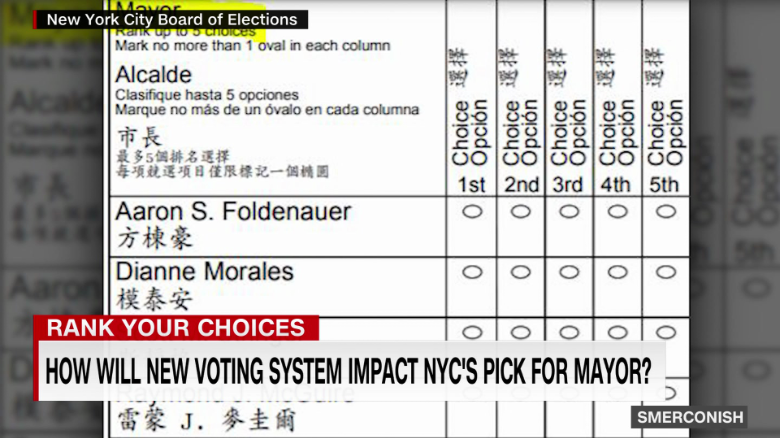How Does Ranked Choice Voting Make Us Feel?

New York City's Democratic primary was incredibly competitive, partially thanks to ranked choice voting. And now we think we know the results: Eric Adams emerged with a narrow victory over Kathryn Garcia.
This is a nice visualization of how voters' rankings played out based on the latest data from the New York City Board of Elections:
📊Chart update!📊 Here are the new tallies in the #nycmayoralrace visualizedhttps://t.co/JfwFwldbnq pic.twitter.com/lH176mQKsD
— Allison McCartney (@anmccartney) July 7, 2021
While Adams held a significant lead in the first round of voting, Garcia went from trailing him by ~10 points to just ~1 point, consolidating votes from many of the other candidates to move to the final round, overtaking Maya Wiley despite Wiley starting with more 1st-choice votes.
But the tendrils fading away from the bars in this graphic emphasize something that feels unsatisfactory about ranked choice voting: exhausted ballots. When voters don't rank candidates who are still in the race after subsequent rounds, their ballots don't contribute to the final tally.
In this race, exhausted ballots constituted 15% of votes cast. In San Francisco's mayoral ranked choice race in 2018, they constituted 8.6% of ballots cast. Slight changes to how voters ranked their ballots could have resulted in a very different outcome, both with Wiley going to the final round and with Garcia overcoming Adams's lead. For New York City, voters were limited to picking their top 5 candidates. In San Francisco, voters can rank up to 10 candidates.
In multi-candidate races, ranked choice asks voters to do more—a lot more—than casting a ballot for a favored candidate. In races with Republicans and Democrats facing off with some third-party competition, ranked choice can significantly limit the feeling that some votes were wasted or that a winner with less than 50 percent of the vote was really the people's choice. With multi-candidate races, however, the number of exhausted ballots is harder for campaigns to avoid, especially when voters can't rank every candidate and are put in the position of not just assessing which candidates they support, but also which candidates are the most likely to be viable in the final few rounds of ranking. At the same time, ranked choice means there's less pressure on individual candidates to drop out before Election Day and throw their support behind more viable candidates.
As a result, ranked choice races with wide fields create a plethora of what if's for campaigns: What if Garcia and Yang had campaigned together earlier? What if fewer challengers to Adams had run, consolidating more campaign attention on alternative candidates? What if Yang hadn't dominated the early campaign thanks to his high name recognition before voters settled on candidates with more government experience? What if voters had been able to select their top 6, 8 or 10 candidates?
I don't think any of these circumstances makes ranked choice a better or worse way to run elections than the status quo, but it should push candidates to consider more ways to consolidate support, such as cross-endorsements ahead of Election Day. And it should encourage eventual winners to find ways to build governing coalitions that include their former rivals and their allies, too, similar to how multi-party legislatures have to build governing coalitions to elect prime ministers.
To the degree that ranked choice results feel unsatisfying, it's up to the winner to make up for that with coalition building after the results are in.